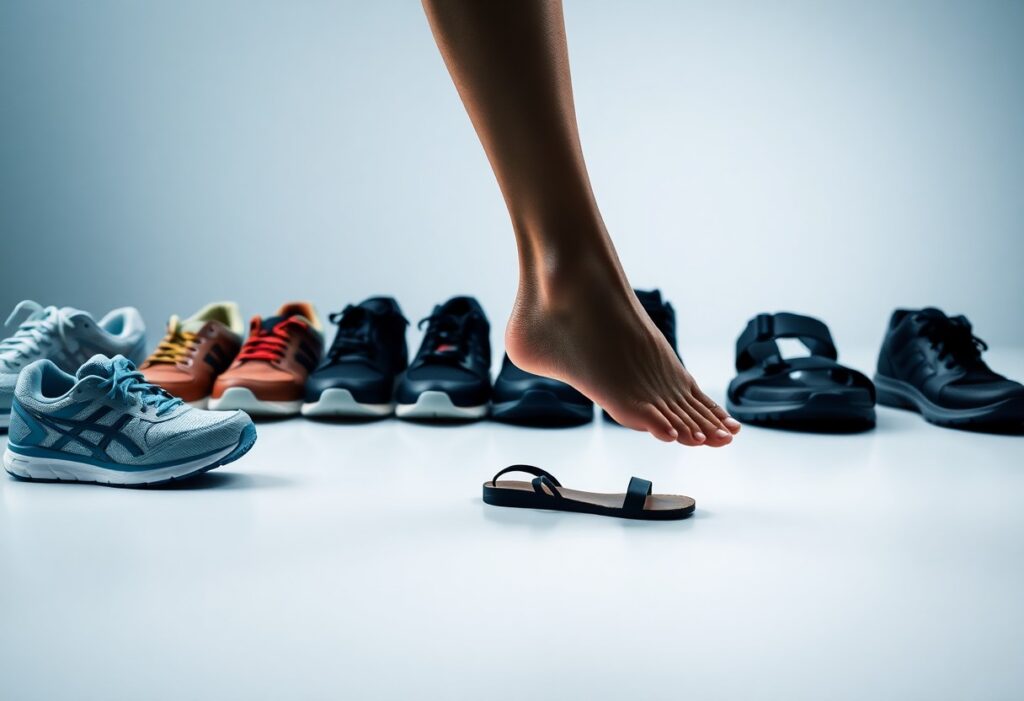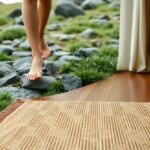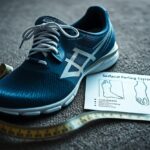
As you navigate through your day, the selection of footwear you choose can profoundly influence your foot health. Many individuals wrongly assume that shoes equipped with additional cushioning and support are the most effective solutions for foot discomfort. In reality, conventional footwear can often lead to more harm than benefits. Dr. Alissa Kuizinas, a prominent podiatrist based in Massachusetts, promotes the use of barefoot shoes or minimalistic footwear, arguing that these options can help cultivate stronger, healthier feet. By selecting shoes that enable your feet to move naturally, you can significantly lower the risk of developing various foot issues while enhancing your overall foot wellness.
Recognizing the Detrimental Effects of Traditional Footwear on Foot Health
Though conventional shoes may offer fleeting relief from foot pain, they frequently exacerbate existing conditions and introduce new complications, as Dr. Alissa Kuizinas illustrates. She emphasizes that the staggering $133 billion shoe industry often prioritizes style and profit margins over actual foot health. As a result, many shoe designs can constrict and weaken your feet over time. This reliance on traditional footwear creates a harmful cycle that ultimately undermines your foot health, leading to long-lasting issues that could have been mitigated with more thoughtful design choices.
Analyzing the Shoe Industry’s Misguided Approach to Foot Health
The core of this dilemma lies within the shoe industry’s misguided efforts to address foot health, primarily focusing on adding excessive cushioning, support, and rigid structures without tackling the root causes of discomfort. This approach fosters an unhealthy dependency on shoes that may, in fact, harm your foot health over the long term, resulting in complications that could have easily been avoided through better design practices that prioritize natural foot movement.
Identifying the Design Flaws in Traditional Footwear
Numerous traditional shoe designs feature narrow toe boxes, inflexible soles, and excessive cushioning that can impede natural foot movement, leading to weak and dysfunctional feet. Dr. Kuizinas asserts that footwear should protect your feet from external elements without restricting their natural movement. An ideal shoe design should prioritize natural foot function and minimalist features, such as wider toe boxes, flexible and flat soles, and minimal cushioning to foster optimal foot health.
By transitioning to barefoot shoes or minimalistic footwear, you can effectively strengthen your feet and enhance your overall foot well-being. Dr. Kuizinas advocates for a philosophy of utilizing as little shoe as possible, allowing your feet to function naturally and move freely, which is vital for maintaining optimal foot mechanics and preventing discomfort.
Understanding the Crucial Role of Natural Foot Movement in Foot Health
Footwear that constrains your foot’s natural movement can lead to a myriad of foot problems and discomfort. It is essential to evaluate how your footwear choices impact your overall foot health and comfort levels to make informed decisions that benefit your feet.
Assessing the Impact of Footwear on Your Foot Mobility
To gain a comprehensive understanding of how shoes affect your foot’s mobility, it’s crucial to analyze the specific designs and characteristics of your selected footwear. Traditional shoes often feature cushioning and support elements that can actually hinder your foot’s natural movement, leading to weak and dysfunctional feet over time. This limitation can inhibit your feet from gaining the necessary strength and flexibility essential for optimal function.
Discovering the Advantages of Promoting Natural Foot Mobility
The benefits of allowing your feet to move naturally are extensive, as strong feet are vital for overall foot health. By opting for minimalistic shoes or barefoot footwear, you empower your feet to perform as they were designed, nurturing strength and resilience. Movement is fundamental for developing strong feet. When constrained by conventional footwear, you risk facing various foot issues and discomfort. Conversely, embracing minimalistic shoes or barefoot options can significantly enhance your foot health by facilitating natural movement and encouraging strength-building. By selecting appropriate footwear, you can reduce your risk of developing foot problems and promote your overall foot wellness.
Delving into the Concept of Functional Footwear for Healthier Feet
Understanding the concept of functional footwear is crucial, as these shoes prioritize both foot health and the ability for natural movement. Functional shoes are intentionally crafted to allow your feet to operate as nature intended, eliminating the need for excessive support or confinement that can hinder foot health.
Defining Functional Footwear and Its Essential Features
Through careful research and testing of various shoe styles, you will discover that functional footwear possesses distinct characteristics, including a wide toe box, flat and flexible soles, along with minimal cushioning and support. These features enable your feet to move freely and naturally, promoting stronger and more efficient foot mechanics that are essential for overall health.
The Numerous Benefits of Functional Footwear in Promoting Foot Health
Wearing functional shoes offers a plethora of advantages, including enhanced foot strength, a reduced risk of injury, and improved overall foot health. These shoes enable your feet to function as they are meant to, resulting in stronger feet and better balance during daily activities. Functionally designed footwear is crafted to support your feet without imposing unnecessary restrictions, allowing them to move and flex naturally. This design philosophy encourages optimal foot health and minimizes the likelihood of developing foot ailments. By choosing functional shoes such as barefoot shoes or minimalistic options, you actively foster healthy foot function and mitigate the risk of foot pain and injury. Although transitioning to functional footwear may require a gradual adjustment period, the long-term benefits for your foot health are invaluable.
Key Features to Prioritize When Selecting Functional Footwear
To attain optimal foot health, it is imperative to search for shoes that exhibit specific features. Essential attributes to consider include:
- wide toe box
- Flat and flexible soles
- Minimal cushioning and support
Being conscious of these characteristics will significantly aid you in choosing shoes that promote healthy foot function and overall support.
Understanding the Importance of Wide Toe Boxes and Flexible Soles
A critical feature of functional footwear is a wide toe box, which allows your toes to spread naturally. This design prevents toe jamming and other discomfort-related issues that could result in chronic foot pain and complications over time.
Realizing the Necessity of Minimal Cushioning and Support
In addition to a wide toe box, functional shoes should also offer minimal cushioning and support. This design element enables your feet to move naturally while strengthening foot muscles, thereby reducing the risk of foot issues. It is essential to stress that minimalistic footwear, such as barefoot shoes, can greatly enhance your foot health by permitting your feet to function freely. By selecting shoes with minimal cushioning and support, you can strengthen the muscles in your feet and diminish the likelihood of injuries. This strategic choice not only improves your overall foot health but also lessens the chances of experiencing chronic pain. Consequently, prioritizing footwear that facilitates natural foot movement without excessive cushioning or support is fundamental.
Embarking on the Journey to Functional Footwear: A Step-by-Step Guide
Having recognized the significance of functional footwear, it’s time to initiate your transition. Contrary to the common belief that more cushioning and support equate to greater comfort, you should aim for minimalistic shoes or barefoot shoes that promote your feet’s natural functioning.
Strategies for a Seamless Transition to Functional Footwear
Despite any initial uncertainties, begin incorporating functional shoes into your everyday routine by adhering to these practical suggestions:
- Start with short walks and gradually increase your distance
- Select shoes that feature a wide toe box and flat soles
- Prefer minimal cushioning and support
The key is to grant your feet ample time to adapt to the new shoes while simultaneously strengthening the muscles in your feet.
Highlighting the Necessity of Patience in Your Transition
Transitioning to functional footwear requires patience and a gradual approach. Shoes that are overly minimalist can cause discomfort and pain if your feet aren’t used to them. Taking a slow pace is crucial, allowing your feet to adjust to the new footwear comfortably.
Footwear options such as barefoot shoes or minimalistic shoes can be incredibly beneficial for your foot health, but it’s vital to introduce them gradually. Overuse or improper sizing can lead to injuries or lasting discomfort. Your ultimate goal is to strengthen your foot muscles while enhancing your overall foot health, so patience is essential, and hurrying through the transition is inadvisable. The rewards of this journey will be substantial; expect improved balance, reduced pain, and stronger feet as you progress.
Fostering Strong and Functional Feet Through Thoughtful Footwear Choices
Even in a culture where shoes with excessive cushioning and support are the norm, you can cultivate strong and functional feet by making informed footwear selections.
Investigating the Connection Between Foot Strength and Overall Health
In conjunction with various health factors, foot strength plays a vital role in your overall well-being, influencing your balance, posture, and movement capabilities.
How Functional Footwear Facilitates Strong Feet Development
Functionally designed shoes characterized by a wide toe box, flat and flexible soles, and minimal cushioning are essential for developing strong feet, as they allow for natural movement. Indeed, wearing functional shoes or barefoot shoes can significantly contribute to building stronger foot muscles and enhancing your overall foot health. By granting your feet the liberty to move and function naturally, you can minimize the risk of foot problems while optimizing your balance and stability. As you transition to minimalistic shoes, anticipate improvements in your walking technique and your overall sense of well-being.
By taking proactive measures to manage your foot health, you can select shoes that support your feet’s natural functions instead of inhibiting them. Opting for barefoot shoes or minimalistic options that enable your feet to operate naturally will foster strength and stability over time. Begin your journey by seeking footwear with a wide toe box, flat and flexible soles, and minimal cushioning and support, all while exercising patience as you transition to a more natural walking style.
The Article A Podiatrist’s Guide to How Shoes Affect Your Foot Health appeared first on My Shoes Finder
The Article How Shoes Impact Your Foot Health: A Podiatrist’s Insights Was Found On https://limitsofstrategy.com
The Article Shoes and Foot Health: Insights from a Podiatrist First Appeared ON
: https://ad4sc.com














Comments are closed